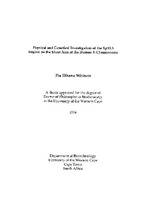Physical and genetical investigation of the Xp11.3 region on the short arm of the human X-chromosome
Abstract
The pattern of inactivation in the DXS8237E-UBE1-PCTK1 region is of particular interest, since the mechanisms of X chromosome inactivation and the escape from inactivation are, as yet, not fully understood. The inactivation status of the DXS8237E and PCTKl gene differ: the first undergoes normal inactivation and the second escapes this process. The status of the UBEl gene has been controversial, although it is widely excepted that it does escape X chromosome inactivation. Physical mapping of the region employing YACs and subsequently P ACs has been undertaken, but was restricted in scope by the high frequency of rearrangements occurring. DNA sequences between DXS8237E, UBE1, PCTKl and the distal gene, UHX1, have been investigated with regard to LINEI elements, which are thought to playa role in X-inactivation. The results obtained strongly suggest a link between LINE1 elements and X chromosome inactivation. Sequence analysis results also contributed to the understanding of difficulties with restriction mapping of the region. Further, this work includes the first reported establishment of the UBEl exonintron boundaries. Additionally, genomic sequence analysis showed that only 46kb separate DXS8237E from UHX1, which confirms that this region is extremely gene rich.

